-
EXECUTIVE SUMMARY
-
Market Overview
-
Key Findings
-
Market Segmentation
-
Competitive Landscape
-
Challenges and Opportunities
-
Future Outlook
-
MARKET INTRODUCTION
-
Definition
-
Scope of the study
-
Research Objective
-
Assumption
-
Limitations
-
RESEARCH METHODOLOGY
-
Overview
-
Data Mining
-
Secondary Research
-
Primary Research
-
Primary Interviews and Information Gathering Process
-
Breakdown of Primary Respondents
-
Forecasting Model
-
Market Size Estimation
-
Bottom-Up Approach
-
Top-Down Approach
-
Data Triangulation
-
Validation
-
MARKET DYNAMICS
-
Overview
-
Drivers
-
Restraints
-
Opportunities
-
MARKET FACTOR ANALYSIS
-
Value chain Analysis
-
Porter's Five Forces Analysis
-
Bargaining Power of Suppliers
-
Bargaining Power of Buyers
-
Threat of New Entrants
-
Threat of Substitutes
-
Intensity of Rivalry
-
COVID-19 Impact Analysis
-
Market Impact Analysis
-
Regional Impact
-
Opportunity and Threat Analysis
-
Beverage Packaging Market, BY Packaging Material (USD Billion)
-
Plastic
-
Glass
-
Metal
-
Paperboard
-
Flexible Materials
-
Beverage Packaging Market, BY Packaging Type (USD Billion)
-
Bottles
-
Cans
-
Pouches
-
Cartons
-
Tetra Packs
-
Beverage Packaging Market, BY End Use Sector (USD Billion)
-
Alcoholic Beverages
-
Non-Alcoholic Beverages
-
Dairy Products
-
Juices
-
Water
-
Beverage Packaging Market, BY Closure Type (USD Billion)
-
Screw Caps
-
Corks
-
Snap-On Caps
-
Twist-Off Caps
-
Flip Caps
-
Beverage Packaging Market, BY Regional (USD Billion)
-
North America
-
US
-
Canada
-
Europe
-
Germany
-
UK
-
France
-
Russia
-
Italy
-
Spain
-
Rest of Europe
-
APAC
-
China
-
India
-
Japan
-
South Korea
-
Malaysia
-
Thailand
-
Indonesia
-
Rest of APAC
-
South America
-
Brazil
-
Mexico
-
Argentina
-
Rest of South America
-
MEA
-
GCC Countries
-
South Africa
-
Rest of MEA
-
Competitive Landscape
-
Overview
-
Competitive Analysis
-
Market share Analysis
-
Major Growth Strategy in the Beverage Packaging Market
-
Competitive Benchmarking
-
Leading Players in Terms of Number of Developments in the Beverage Packaging Market
-
Key developments and growth strategies
-
New Product Launch/Service Deployment
-
Merger & Acquisitions
-
Joint Ventures
-
Major Players Financial Matrix
-
Sales and Operating Income
-
Major Players R&D Expenditure. 2023
-
Company Profiles
-
Amcor
-
Financial Overview
-
Products Offered
-
Key Developments
-
SWOT Analysis
-
Key Strategies
-
Crown Holdings
-
Financial Overview
-
Products Offered
-
Key Developments
-
SWOT Analysis
-
Key Strategies
-
Ball Corporation
-
Financial Overview
-
Products Offered
-
Key Developments
-
SWOT Analysis
-
Key Strategies
-
Graphic Packaging Holding Company
-
Financial Overview
-
Products Offered
-
Key Developments
-
SWOT Analysis
-
Key Strategies
-
Rexam
-
Financial Overview
-
Products Offered
-
Key Developments
-
SWOT Analysis
-
Key Strategies
-
Ardagh Group
-
Financial Overview
-
Products Offered
-
Key Developments
-
SWOT Analysis
-
Key Strategies
-
Smurfit Kappa
-
Financial Overview
-
Products Offered
-
Key Developments
-
SWOT Analysis
-
Key Strategies
-
Silgan Holdings
-
Financial Overview
-
Products Offered
-
Key Developments
-
SWOT Analysis
-
Key Strategies
-
Tetra Pak
-
Financial Overview
-
Products Offered
-
Key Developments
-
SWOT Analysis
-
Key Strategies
-
Welch Packaging
-
Financial Overview
-
Products Offered
-
Key Developments
-
SWOT Analysis
-
Key Strategies
-
Mondi Group
-
Financial Overview
-
Products Offered
-
Key Developments
-
SWOT Analysis
-
Key Strategies
-
Pratt Industries
-
Financial Overview
-
Products Offered
-
Key Developments
-
SWOT Analysis
-
Key Strategies
-
Stora Enso
-
Financial Overview
-
Products Offered
-
Key Developments
-
SWOT Analysis
-
Key Strategies
-
OI Glass
-
Financial Overview
-
Products Offered
-
Key Developments
-
SWOT Analysis
-
Key Strategies
-
Appendix
-
References
-
Related Reports
-
LIST Of tables
-
LIST OF ASSUMPTIONS
-
North America Beverage Packaging Market SIZE ESTIMATES & FORECAST, BY PACKAGING MATERIAL, 2019-2035 (USD Billions)
-
North America Beverage Packaging Market SIZE ESTIMATES & FORECAST, BY PACKAGING TYPE, 2019-2035 (USD Billions)
-
North America Beverage Packaging Market SIZE ESTIMATES & FORECAST, BY END USE SECTOR, 2019-2035 (USD Billions)
-
North America Beverage Packaging Market SIZE ESTIMATES & FORECAST, BY CLOSURE TYPE, 2019-2035 (USD Billions)
-
North America Beverage Packaging Market SIZE ESTIMATES & FORECAST, BY REGIONAL, 2019-2035 (USD Billions)
-
US Beverage Packaging Market SIZE ESTIMATES & FORECAST, BY PACKAGING MATERIAL, 2019-2035 (USD Billions)
-
US Beverage Packaging Market SIZE ESTIMATES & FORECAST, BY PACKAGING TYPE, 2019-2035 (USD Billions)
-
US Beverage Packaging Market SIZE ESTIMATES & FORECAST, BY END USE SECTOR, 2019-2035 (USD Billions)
-
US Beverage Packaging Market SIZE ESTIMATES & FORECAST, BY CLOSURE TYPE, 2019-2035 (USD Billions)
-
US Beverage Packaging Market SIZE ESTIMATES & FORECAST, BY REGIONAL, 2019-2035 (USD Billions)
-
Canada Beverage Packaging Market SIZE ESTIMATES & FORECAST, BY PACKAGING MATERIAL, 2019-2035 (USD Billions)
-
Canada Beverage Packaging Market SIZE ESTIMATES & FORECAST, BY PACKAGING TYPE, 2019-2035 (USD Billions)
-
Canada Beverage Packaging Market SIZE ESTIMATES & FORECAST, BY END USE SECTOR, 2019-2035 (USD Billions)
-
Canada Beverage Packaging Market SIZE ESTIMATES & FORECAST, BY CLOSURE TYPE, 2019-2035 (USD Billions)
-
Canada Beverage Packaging Market SIZE ESTIMATES & FORECAST, BY REGIONAL, 2019-2035 (USD Billions)
-
Europe Beverage Packaging Market SIZE ESTIMATES & FORECAST, BY PACKAGING MATERIAL, 2019-2035 (USD Billions)
-
Europe Beverage Packaging Market SIZE ESTIMATES & FORECAST, BY PACKAGING TYPE, 2019-2035 (USD Billions)
-
Europe Beverage Packaging Market SIZE ESTIMATES & FORECAST, BY END USE SECTOR, 2019-2035 (USD Billions)
-
Europe Beverage Packaging Market SIZE ESTIMATES & FORECAST, BY CLOSURE TYPE, 2019-2035 (USD Billions)
-
Europe Beverage Packaging Market SIZE ESTIMATES & FORECAST, BY REGIONAL, 2019-2035 (USD Billions)
-
Germany Beverage Packaging Market SIZE ESTIMATES & FORECAST, BY PACKAGING MATERIAL, 2019-2035 (USD Billions)
-
Germany Beverage Packaging Market SIZE ESTIMATES & FORECAST, BY PACKAGING TYPE, 2019-2035 (USD Billions)
-
Germany Beverage Packaging Market SIZE ESTIMATES & FORECAST, BY END USE SECTOR, 2019-2035 (USD Billions)
-
Germany Beverage Packaging Market SIZE ESTIMATES & FORECAST, BY CLOSURE TYPE, 2019-2035 (USD Billions)
-
Germany Beverage Packaging Market SIZE ESTIMATES & FORECAST, BY REGIONAL, 2019-2035 (USD Billions)
-
UK Beverage Packaging Market SIZE ESTIMATES & FORECAST, BY PACKAGING MATERIAL, 2019-2035 (USD Billions)
-
UK Beverage Packaging Market SIZE ESTIMATES & FORECAST, BY PACKAGING TYPE, 2019-2035 (USD Billions)
-
UK Beverage Packaging Market SIZE ESTIMATES & FORECAST, BY END USE SECTOR, 2019-2035 (USD Billions)
-
UK Beverage Packaging Market SIZE ESTIMATES & FORECAST, BY CLOSURE TYPE, 2019-2035 (USD Billions)
-
UK Beverage Packaging Market SIZE ESTIMATES & FORECAST, BY REGIONAL, 2019-2035 (USD Billions)
-
France Beverage Packaging Market SIZE ESTIMATES & FORECAST, BY PACKAGING MATERIAL, 2019-2035 (USD Billions)
-
France Beverage Packaging Market SIZE ESTIMATES & FORECAST, BY PACKAGING TYPE, 2019-2035 (USD Billions)
-
France Beverage Packaging Market SIZE ESTIMATES & FORECAST, BY END USE SECTOR, 2019-2035 (USD Billions)
-
France Beverage Packaging Market SIZE ESTIMATES & FORECAST, BY CLOSURE TYPE, 2019-2035 (USD Billions)
-
France Beverage Packaging Market SIZE ESTIMATES & FORECAST, BY REGIONAL, 2019-2035 (USD Billions)
-
Russia Beverage Packaging Market SIZE ESTIMATES & FORECAST, BY PACKAGING MATERIAL, 2019-2035 (USD Billions)
-
Russia Beverage Packaging Market SIZE ESTIMATES & FORECAST, BY PACKAGING TYPE, 2019-2035 (USD Billions)
-
Russia Beverage Packaging Market SIZE ESTIMATES & FORECAST, BY END USE SECTOR, 2019-2035 (USD Billions)
-
Russia Beverage Packaging Market SIZE ESTIMATES & FORECAST, BY CLOSURE TYPE, 2019-2035 (USD Billions)
-
Russia Beverage Packaging Market SIZE ESTIMATES & FORECAST, BY REGIONAL, 2019-2035 (USD Billions)
-
Italy Beverage Packaging Market SIZE ESTIMATES & FORECAST, BY PACKAGING MATERIAL, 2019-2035 (USD Billions)
-
Italy Beverage Packaging Market SIZE ESTIMATES & FORECAST, BY PACKAGING TYPE, 2019-2035 (USD Billions)
-
Italy Beverage Packaging Market SIZE ESTIMATES & FORECAST, BY END USE SECTOR, 2019-2035 (USD Billions)
-
Italy Beverage Packaging Market SIZE ESTIMATES & FORECAST, BY CLOSURE TYPE, 2019-2035 (USD Billions)
-
Italy Beverage Packaging Market SIZE ESTIMATES & FORECAST, BY REGIONAL, 2019-2035 (USD Billions)
-
Spain Beverage Packaging Market SIZE ESTIMATES & FORECAST, BY PACKAGING MATERIAL, 2019-2035 (USD Billions)
-
Spain Beverage Packaging Market SIZE ESTIMATES & FORECAST, BY PACKAGING TYPE, 2019-2035 (USD Billions)
-
Spain Beverage Packaging Market SIZE ESTIMATES & FORECAST, BY END USE SECTOR, 2019-2035 (USD Billions)
-
Spain Beverage Packaging Market SIZE ESTIMATES & FORECAST, BY CLOSURE TYPE, 2019-2035 (USD Billions)
-
Spain Beverage Packaging Market SIZE ESTIMATES & FORECAST, BY REGIONAL, 2019-2035 (USD Billions)
-
Rest of Europe Beverage Packaging Market SIZE ESTIMATES & FORECAST, BY PACKAGING MATERIAL, 2019-2035 (USD Billions)
-
Rest of Europe Beverage Packaging Market SIZE ESTIMATES & FORECAST, BY PACKAGING TYPE, 2019-2035 (USD Billions)
-
Rest of Europe Beverage Packaging Market SIZE ESTIMATES & FORECAST, BY END USE SECTOR, 2019-2035 (USD Billions)
-
Rest of Europe Beverage Packaging Market SIZE ESTIMATES & FORECAST, BY CLOSURE TYPE, 2019-2035 (USD Billions)
-
Rest of Europe Beverage Packaging Market SIZE ESTIMATES & FORECAST, BY REGIONAL, 2019-2035 (USD Billions)
-
APAC Beverage Packaging Market SIZE ESTIMATES & FORECAST, BY PACKAGING MATERIAL, 2019-2035 (USD Billions)
-
APAC Beverage Packaging Market SIZE ESTIMATES & FORECAST, BY PACKAGING TYPE, 2019-2035 (USD Billions)
-
APAC Beverage Packaging Market SIZE ESTIMATES & FORECAST, BY END USE SECTOR, 2019-2035 (USD Billions)
-
APAC Beverage Packaging Market SIZE ESTIMATES & FORECAST, BY CLOSURE TYPE, 2019-2035 (USD Billions)
-
APAC Beverage Packaging Market SIZE ESTIMATES & FORECAST, BY REGIONAL, 2019-2035 (USD Billions)
-
China Beverage Packaging Market SIZE ESTIMATES & FORECAST, BY PACKAGING MATERIAL, 2019-2035 (USD Billions)
-
China Beverage Packaging Market SIZE ESTIMATES & FORECAST, BY PACKAGING TYPE, 2019-2035 (USD Billions)
-
China Beverage Packaging Market SIZE ESTIMATES & FORECAST, BY END USE SECTOR, 2019-2035 (USD Billions)
-
China Beverage Packaging Market SIZE ESTIMATES & FORECAST, BY CLOSURE TYPE, 2019-2035 (USD Billions)
-
China Beverage Packaging Market SIZE ESTIMATES & FORECAST, BY REGIONAL, 2019-2035 (USD Billions)
-
India Beverage Packaging Market SIZE ESTIMATES & FORECAST, BY PACKAGING MATERIAL, 2019-2035 (USD Billions)
-
India Beverage Packaging Market SIZE ESTIMATES & FORECAST, BY PACKAGING TYPE, 2019-2035 (USD Billions)
-
India Beverage Packaging Market SIZE ESTIMATES & FORECAST, BY END USE SECTOR, 2019-2035 (USD Billions)
-
India Beverage Packaging Market SIZE ESTIMATES & FORECAST, BY CLOSURE TYPE, 2019-2035 (USD Billions)
-
India Beverage Packaging Market SIZE ESTIMATES & FORECAST, BY REGIONAL, 2019-2035 (USD Billions)
-
Japan Beverage Packaging Market SIZE ESTIMATES & FORECAST, BY PACKAGING MATERIAL, 2019-2035 (USD Billions)
-
Japan Beverage Packaging Market SIZE ESTIMATES & FORECAST, BY PACKAGING TYPE, 2019-2035 (USD Billions)
-
Japan Beverage Packaging Market SIZE ESTIMATES & FORECAST, BY END USE SECTOR, 2019-2035 (USD Billions)
-
Japan Beverage Packaging Market SIZE ESTIMATES & FORECAST, BY CLOSURE TYPE, 2019-2035 (USD Billions)
-
Japan Beverage Packaging Market SIZE ESTIMATES & FORECAST, BY REGIONAL, 2019-2035 (USD Billions)
-
South Korea Beverage Packaging Market SIZE ESTIMATES & FORECAST, BY PACKAGING MATERIAL, 2019-2035 (USD Billions)
-
South Korea Beverage Packaging Market SIZE ESTIMATES & FORECAST, BY PACKAGING TYPE, 2019-2035 (USD Billions)
-
South Korea Beverage Packaging Market SIZE ESTIMATES & FORECAST, BY END USE SECTOR, 2019-2035 (USD Billions)
-
South Korea Beverage Packaging Market SIZE ESTIMATES & FORECAST, BY CLOSURE TYPE, 2019-2035 (USD Billions)
-
South Korea Beverage Packaging Market SIZE ESTIMATES & FORECAST, BY REGIONAL, 2019-2035 (USD Billions)
-
Malaysia Beverage Packaging Market SIZE ESTIMATES & FORECAST, BY PACKAGING MATERIAL, 2019-2035 (USD Billions)
-
Malaysia Beverage Packaging Market SIZE ESTIMATES & FORECAST, BY PACKAGING TYPE, 2019-2035 (USD Billions)
-
Malaysia Beverage Packaging Market SIZE ESTIMATES & FORECAST, BY END USE SECTOR, 2019-2035 (USD Billions)
-
Malaysia Beverage Packaging Market SIZE ESTIMATES & FORECAST, BY CLOSURE TYPE, 2019-2035 (USD Billions)
-
Malaysia Beverage Packaging Market SIZE ESTIMATES & FORECAST, BY REGIONAL, 2019-2035 (USD Billions)
-
Thailand Beverage Packaging Market SIZE ESTIMATES & FORECAST, BY PACKAGING MATERIAL, 2019-2035 (USD Billions)
-
Thailand Beverage Packaging Market SIZE ESTIMATES & FORECAST, BY PACKAGING TYPE, 2019-2035 (USD Billions)
-
Thailand Beverage Packaging Market SIZE ESTIMATES & FORECAST, BY END USE SECTOR, 2019-2035 (USD Billions)
-
Thailand Beverage Packaging Market SIZE ESTIMATES & FORECAST, BY CLOSURE TYPE, 2019-2035 (USD Billions)
-
Thailand Beverage Packaging Market SIZE ESTIMATES & FORECAST, BY REGIONAL, 2019-2035 (USD Billions)
-
Indonesia Beverage Packaging Market SIZE ESTIMATES & FORECAST, BY PACKAGING MATERIAL, 2019-2035 (USD Billions)
-
Indonesia Beverage Packaging Market SIZE ESTIMATES & FORECAST, BY PACKAGING TYPE, 2019-2035 (USD Billions)
-
Indonesia Beverage Packaging Market SIZE ESTIMATES & FORECAST, BY END USE SECTOR, 2019-2035 (USD Billions)
-
Indonesia Beverage Packaging Market SIZE ESTIMATES & FORECAST, BY CLOSURE TYPE, 2019-2035 (USD Billions)
-
Indonesia Beverage Packaging Market SIZE ESTIMATES & FORECAST, BY REGIONAL, 2019-2035 (USD Billions)
-
Rest of APAC Beverage Packaging Market SIZE ESTIMATES & FORECAST, BY PACKAGING MATERIAL, 2019-2035 (USD Billions)
-
Rest of APAC Beverage Packaging Market SIZE ESTIMATES & FORECAST, BY PACKAGING TYPE, 2019-2035 (USD Billions)
-
Rest of APAC Beverage Packaging Market SIZE ESTIMATES & FORECAST, BY END USE SECTOR, 2019-2035 (USD Billions)
-
Rest of APAC Beverage Packaging Market SIZE ESTIMATES & FORECAST, BY CLOSURE TYPE, 2019-2035 (USD Billions)
-
Rest of APAC Beverage Packaging Market SIZE ESTIMATES & FORECAST, BY REGIONAL, 2019-2035 (USD Billions)
-
South America Beverage Packaging Market SIZE ESTIMATES & FORECAST, BY PACKAGING MATERIAL, 2019-2035 (USD Billions)
-
South America Beverage Packaging Market SIZE ESTIMATES & FORECAST, BY PACKAGING TYPE, 2019-2035 (USD Billions)
-
South America Beverage Packaging Market SIZE ESTIMATES & FORECAST, BY END USE SECTOR, 2019-2035 (USD Billions)
-
South America Beverage Packaging Market SIZE ESTIMATES & FORECAST, BY CLOSURE TYPE, 2019-2035 (USD Billions)
-
South America Beverage Packaging Market SIZE ESTIMATES & FORECAST, BY REGIONAL, 2019-2035 (USD Billions)
-
Brazil Beverage Packaging Market SIZE ESTIMATES & FORECAST, BY PACKAGING MATERIAL, 2019-2035 (USD Billions)
-
Brazil Beverage Packaging Market SIZE ESTIMATES & FORECAST, BY PACKAGING TYPE, 2019-2035 (USD Billions)
-
Brazil Beverage Packaging Market SIZE ESTIMATES & FORECAST, BY END USE SECTOR, 2019-2035 (USD Billions)
-
Brazil Beverage Packaging Market SIZE ESTIMATES & FORECAST, BY CLOSURE TYPE, 2019-2035 (USD Billions)
-
Brazil Beverage Packaging Market SIZE ESTIMATES & FORECAST, BY REGIONAL, 2019-2035 (USD Billions)
-
Mexico Beverage Packaging Market SIZE ESTIMATES & FORECAST, BY PACKAGING MATERIAL, 2019-2035 (USD Billions)
-
Mexico Beverage Packaging Market SIZE ESTIMATES & FORECAST, BY PACKAGING TYPE, 2019-2035 (USD Billions)
-
Mexico Beverage Packaging Market SIZE ESTIMATES & FORECAST, BY END USE SECTOR, 2019-2035 (USD Billions)
-
Mexico Beverage Packaging Market SIZE ESTIMATES & FORECAST, BY CLOSURE TYPE, 2019-2035 (USD Billions)
-
Mexico Beverage Packaging Market SIZE ESTIMATES & FORECAST, BY REGIONAL, 2019-2035 (USD Billions)
-
Argentina Beverage Packaging Market SIZE ESTIMATES & FORECAST, BY PACKAGING MATERIAL, 2019-2035 (USD Billions)
-
Argentina Beverage Packaging Market SIZE ESTIMATES & FORECAST, BY PACKAGING TYPE, 2019-2035 (USD Billions)
-
Argentina Beverage Packaging Market SIZE ESTIMATES & FORECAST, BY END USE SECTOR, 2019-2035 (USD Billions)
-
Argentina Beverage Packaging Market SIZE ESTIMATES & FORECAST, BY CLOSURE TYPE, 2019-2035 (USD Billions)
-
Argentina Beverage Packaging Market SIZE ESTIMATES & FORECAST, BY REGIONAL, 2019-2035 (USD Billions)
-
Rest of South America Beverage Packaging Market SIZE ESTIMATES & FORECAST, BY PACKAGING MATERIAL, 2019-2035 (USD Billions)
-
Rest of South America Beverage Packaging Market SIZE ESTIMATES & FORECAST, BY PACKAGING TYPE, 2019-2035 (USD Billions)
-
Rest of South America Beverage Packaging Market SIZE ESTIMATES & FORECAST, BY END USE SECTOR, 2019-2035 (USD Billions)
-
Rest of South America Beverage Packaging Market SIZE ESTIMATES & FORECAST, BY CLOSURE TYPE, 2019-2035 (USD Billions)
-
Rest of South America Beverage Packaging Market SIZE ESTIMATES & FORECAST, BY REGIONAL, 2019-2035 (USD Billions)
-
MEA Beverage Packaging Market SIZE ESTIMATES & FORECAST, BY PACKAGING MATERIAL, 2019-2035 (USD Billions)
-
MEA Beverage Packaging Market SIZE ESTIMATES & FORECAST, BY PACKAGING TYPE, 2019-2035 (USD Billions)
-
MEA Beverage Packaging Market SIZE ESTIMATES & FORECAST, BY END USE SECTOR, 2019-2035 (USD Billions)
-
MEA Beverage Packaging Market SIZE ESTIMATES & FORECAST, BY CLOSURE TYPE, 2019-2035 (USD Billions)
-
MEA Beverage Packaging Market SIZE ESTIMATES & FORECAST, BY REGIONAL, 2019-2035 (USD Billions)
-
GCC Countries Beverage Packaging Market SIZE ESTIMATES & FORECAST, BY PACKAGING MATERIAL, 2019-2035 (USD Billions)
-
GCC Countries Beverage Packaging Market SIZE ESTIMATES & FORECAST, BY PACKAGING TYPE, 2019-2035 (USD Billions)
-
GCC Countries Beverage Packaging Market SIZE ESTIMATES & FORECAST, BY END USE SECTOR, 2019-2035 (USD Billions)
-
GCC Countries Beverage Packaging Market SIZE ESTIMATES & FORECAST, BY CLOSURE TYPE, 2019-2035 (USD Billions)
-
GCC Countries Beverage Packaging Market SIZE ESTIMATES & FORECAST, BY REGIONAL, 2019-2035 (USD Billions)
-
South Africa Beverage Packaging Market SIZE ESTIMATES & FORECAST, BY PACKAGING MATERIAL, 2019-2035 (USD Billions)
-
South Africa Beverage Packaging Market SIZE ESTIMATES & FORECAST, BY PACKAGING TYPE, 2019-2035 (USD Billions)
-
South Africa Beverage Packaging Market SIZE ESTIMATES & FORECAST, BY END USE SECTOR, 2019-2035 (USD Billions)
-
South Africa Beverage Packaging Market SIZE ESTIMATES & FORECAST, BY CLOSURE TYPE, 2019-2035 (USD Billions)
-
South Africa Beverage Packaging Market SIZE ESTIMATES & FORECAST, BY REGIONAL, 2019-2035 (USD Billions)
-
Rest of MEA Beverage Packaging Market SIZE ESTIMATES & FORECAST, BY PACKAGING MATERIAL, 2019-2035 (USD Billions)
-
Rest of MEA Beverage Packaging Market SIZE ESTIMATES & FORECAST, BY PACKAGING TYPE, 2019-2035 (USD Billions)
-
Rest of MEA Beverage Packaging Market SIZE ESTIMATES & FORECAST, BY END USE SECTOR, 2019-2035 (USD Billions)
-
Rest of MEA Beverage Packaging Market SIZE ESTIMATES & FORECAST, BY CLOSURE TYPE, 2019-2035 (USD Billions)
-
Rest of MEA Beverage Packaging Market SIZE ESTIMATES & FORECAST, BY REGIONAL, 2019-2035 (USD Billions)
-
PRODUCT LAUNCH/PRODUCT DEVELOPMENT/APPROVAL
-
ACQUISITION/PARTNERSHIP
-
LIST Of figures
-
MARKET SYNOPSIS
-
NORTH AMERICA BEVERAGE PACKAGING MARKET ANALYSIS
-
US BEVERAGE PACKAGING MARKET ANALYSIS BY PACKAGING MATERIAL
-
US BEVERAGE PACKAGING MARKET ANALYSIS BY PACKAGING TYPE
-
US BEVERAGE PACKAGING MARKET ANALYSIS BY END USE SECTOR
-
US BEVERAGE PACKAGING MARKET ANALYSIS BY CLOSURE TYPE
-
US BEVERAGE PACKAGING MARKET ANALYSIS BY REGIONAL
-
CANADA BEVERAGE PACKAGING MARKET ANALYSIS BY PACKAGING MATERIAL
-
CANADA BEVERAGE PACKAGING MARKET ANALYSIS BY PACKAGING TYPE
-
CANADA BEVERAGE PACKAGING MARKET ANALYSIS BY END USE SECTOR
-
CANADA BEVERAGE PACKAGING MARKET ANALYSIS BY CLOSURE TYPE
-
CANADA BEVERAGE PACKAGING MARKET ANALYSIS BY REGIONAL
-
EUROPE BEVERAGE PACKAGING MARKET ANALYSIS
-
GERMANY BEVERAGE PACKAGING MARKET ANALYSIS BY PACKAGING MATERIAL
-
GERMANY BEVERAGE PACKAGING MARKET ANALYSIS BY PACKAGING TYPE
-
GERMANY BEVERAGE PACKAGING MARKET ANALYSIS BY END USE SECTOR
-
GERMANY BEVERAGE PACKAGING MARKET ANALYSIS BY CLOSURE TYPE
-
GERMANY BEVERAGE PACKAGING MARKET ANALYSIS BY REGIONAL
-
UK BEVERAGE PACKAGING MARKET ANALYSIS BY PACKAGING MATERIAL
-
UK BEVERAGE PACKAGING MARKET ANALYSIS BY PACKAGING TYPE
-
UK BEVERAGE PACKAGING MARKET ANALYSIS BY END USE SECTOR
-
UK BEVERAGE PACKAGING MARKET ANALYSIS BY CLOSURE TYPE
-
UK BEVERAGE PACKAGING MARKET ANALYSIS BY REGIONAL
-
FRANCE BEVERAGE PACKAGING MARKET ANALYSIS BY PACKAGING MATERIAL
-
FRANCE BEVERAGE PACKAGING MARKET ANALYSIS BY PACKAGING TYPE
-
FRANCE BEVERAGE PACKAGING MARKET ANALYSIS BY END USE SECTOR
-
FRANCE BEVERAGE PACKAGING MARKET ANALYSIS BY CLOSURE TYPE
-
FRANCE BEVERAGE PACKAGING MARKET ANALYSIS BY REGIONAL
-
RUSSIA BEVERAGE PACKAGING MARKET ANALYSIS BY PACKAGING MATERIAL
-
RUSSIA BEVERAGE PACKAGING MARKET ANALYSIS BY PACKAGING TYPE
-
RUSSIA BEVERAGE PACKAGING MARKET ANALYSIS BY END USE SECTOR
-
RUSSIA BEVERAGE PACKAGING MARKET ANALYSIS BY CLOSURE TYPE
-
RUSSIA BEVERAGE PACKAGING MARKET ANALYSIS BY REGIONAL
-
ITALY BEVERAGE PACKAGING MARKET ANALYSIS BY PACKAGING MATERIAL
-
ITALY BEVERAGE PACKAGING MARKET ANALYSIS BY PACKAGING TYPE
-
ITALY BEVERAGE PACKAGING MARKET ANALYSIS BY END USE SECTOR
-
ITALY BEVERAGE PACKAGING MARKET ANALYSIS BY CLOSURE TYPE
-
ITALY BEVERAGE PACKAGING MARKET ANALYSIS BY REGIONAL
-
SPAIN BEVERAGE PACKAGING MARKET ANALYSIS BY PACKAGING MATERIAL
-
SPAIN BEVERAGE PACKAGING MARKET ANALYSIS BY PACKAGING TYPE
-
SPAIN BEVERAGE PACKAGING MARKET ANALYSIS BY END USE SECTOR
-
SPAIN BEVERAGE PACKAGING MARKET ANALYSIS BY CLOSURE TYPE
-
SPAIN BEVERAGE PACKAGING MARKET ANALYSIS BY REGIONAL
-
REST OF EUROPE BEVERAGE PACKAGING MARKET ANALYSIS BY PACKAGING MATERIAL
-
REST OF EUROPE BEVERAGE PACKAGING MARKET ANALYSIS BY PACKAGING TYPE
-
REST OF EUROPE BEVERAGE PACKAGING MARKET ANALYSIS BY END USE SECTOR
-
REST OF EUROPE BEVERAGE PACKAGING MARKET ANALYSIS BY CLOSURE TYPE
-
REST OF EUROPE BEVERAGE PACKAGING MARKET ANALYSIS BY REGIONAL
-
APAC BEVERAGE PACKAGING MARKET ANALYSIS
-
CHINA BEVERAGE PACKAGING MARKET ANALYSIS BY PACKAGING MATERIAL
-
CHINA BEVERAGE PACKAGING MARKET ANALYSIS BY PACKAGING TYPE
-
CHINA BEVERAGE PACKAGING MARKET ANALYSIS BY END USE SECTOR
-
CHINA BEVERAGE PACKAGING MARKET ANALYSIS BY CLOSURE TYPE
-
CHINA BEVERAGE PACKAGING MARKET ANALYSIS BY REGIONAL
-
INDIA BEVERAGE PACKAGING MARKET ANALYSIS BY PACKAGING MATERIAL
-
INDIA BEVERAGE PACKAGING MARKET ANALYSIS BY PACKAGING TYPE
-
INDIA BEVERAGE PACKAGING MARKET ANALYSIS BY END USE SECTOR
-
INDIA BEVERAGE PACKAGING MARKET ANALYSIS BY CLOSURE TYPE
-
INDIA BEVERAGE PACKAGING MARKET ANALYSIS BY REGIONAL
-
JAPAN BEVERAGE PACKAGING MARKET ANALYSIS BY PACKAGING MATERIAL
-
JAPAN BEVERAGE PACKAGING MARKET ANALYSIS BY PACKAGING TYPE
-
JAPAN BEVERAGE PACKAGING MARKET ANALYSIS BY END USE SECTOR
-
JAPAN BEVERAGE PACKAGING MARKET ANALYSIS BY CLOSURE TYPE
-
JAPAN BEVERAGE PACKAGING MARKET ANALYSIS BY REGIONAL
-
SOUTH KOREA BEVERAGE PACKAGING MARKET ANALYSIS BY PACKAGING MATERIAL
-
SOUTH KOREA BEVERAGE PACKAGING MARKET ANALYSIS BY PACKAGING TYPE
-
SOUTH KOREA BEVERAGE PACKAGING MARKET ANALYSIS BY END USE SECTOR
-
SOUTH KOREA BEVERAGE PACKAGING MARKET ANALYSIS BY CLOSURE TYPE
-
SOUTH KOREA BEVERAGE PACKAGING MARKET ANALYSIS BY REGIONAL
-
MALAYSIA BEVERAGE PACKAGING MARKET ANALYSIS BY PACKAGING MATERIAL
-
MALAYSIA BEVERAGE PACKAGING MARKET ANALYSIS BY PACKAGING TYPE
-
MALAYSIA BEVERAGE PACKAGING MARKET ANALYSIS BY END USE SECTOR
-
MALAYSIA BEVERAGE PACKAGING MARKET ANALYSIS BY CLOSURE TYPE
-
MALAYSIA BEVERAGE PACKAGING MARKET ANALYSIS BY REGIONAL
-
THAILAND BEVERAGE PACKAGING MARKET ANALYSIS BY PACKAGING MATERIAL
-
THAILAND BEVERAGE PACKAGING MARKET ANALYSIS BY PACKAGING TYPE
-
THAILAND BEVERAGE PACKAGING MARKET ANALYSIS BY END USE SECTOR
-
THAILAND BEVERAGE PACKAGING MARKET ANALYSIS BY CLOSURE TYPE
-
THAILAND BEVERAGE PACKAGING MARKET ANALYSIS BY REGIONAL
-
INDONESIA BEVERAGE PACKAGING MARKET ANALYSIS BY PACKAGING MATERIAL
-
INDONESIA BEVERAGE PACKAGING MARKET ANALYSIS BY PACKAGING TYPE
-
INDONESIA BEVERAGE PACKAGING MARKET ANALYSIS BY END USE SECTOR
-
INDONESIA BEVERAGE PACKAGING MARKET ANALYSIS BY CLOSURE TYPE
-
INDONESIA BEVERAGE PACKAGING MARKET ANALYSIS BY REGIONAL
-
REST OF APAC BEVERAGE PACKAGING MARKET ANALYSIS BY PACKAGING MATERIAL
-
REST OF APAC BEVERAGE PACKAGING MARKET ANALYSIS BY PACKAGING TYPE
-
REST OF APAC BEVERAGE PACKAGING MARKET ANALYSIS BY END USE SECTOR
-
REST OF APAC BEVERAGE PACKAGING MARKET ANALYSIS BY CLOSURE TYPE
-
REST OF APAC BEVERAGE PACKAGING MARKET ANALYSIS BY REGIONAL
-
SOUTH AMERICA BEVERAGE PACKAGING MARKET ANALYSIS
-
BRAZIL BEVERAGE PACKAGING MARKET ANALYSIS BY PACKAGING MATERIAL
-
BRAZIL BEVERAGE PACKAGING MARKET ANALYSIS BY PACKAGING TYPE
-
BRAZIL BEVERAGE PACKAGING MARKET ANALYSIS BY END USE SECTOR
-
BRAZIL BEVERAGE PACKAGING MARKET ANALYSIS BY CLOSURE TYPE
-
BRAZIL BEVERAGE PACKAGING MARKET ANALYSIS BY REGIONAL
-
MEXICO BEVERAGE PACKAGING MARKET ANALYSIS BY PACKAGING MATERIAL
-
MEXICO BEVERAGE PACKAGING MARKET ANALYSIS BY PACKAGING TYPE
-
MEXICO BEVERAGE PACKAGING MARKET ANALYSIS BY END USE SECTOR
-
MEXICO BEVERAGE PACKAGING MARKET ANALYSIS BY CLOSURE TYPE
-
MEXICO BEVERAGE PACKAGING MARKET ANALYSIS BY REGIONAL
-
ARGENTINA BEVERAGE PACKAGING MARKET ANALYSIS BY PACKAGING MATERIAL
-
ARGENTINA BEVERAGE PACKAGING MARKET ANALYSIS BY PACKAGING TYPE
-
ARGENTINA BEVERAGE PACKAGING MARKET ANALYSIS BY END USE SECTOR
-
ARGENTINA BEVERAGE PACKAGING MARKET ANALYSIS BY CLOSURE TYPE
-
ARGENTINA BEVERAGE PACKAGING MARKET ANALYSIS BY REGIONAL
-
REST OF SOUTH AMERICA BEVERAGE PACKAGING MARKET ANALYSIS BY PACKAGING MATERIAL
-
REST OF SOUTH AMERICA BEVERAGE PACKAGING MARKET ANALYSIS BY PACKAGING TYPE
-
REST OF SOUTH AMERICA BEVERAGE PACKAGING MARKET ANALYSIS BY END USE SECTOR
-
REST OF SOUTH AMERICA BEVERAGE PACKAGING MARKET ANALYSIS BY CLOSURE TYPE
-
REST OF SOUTH AMERICA BEVERAGE PACKAGING MARKET ANALYSIS BY REGIONAL
-
MEA BEVERAGE PACKAGING MARKET ANALYSIS
-
GCC COUNTRIES BEVERAGE PACKAGING MARKET ANALYSIS BY PACKAGING MATERIAL
-
GCC COUNTRIES BEVERAGE PACKAGING MARKET ANALYSIS BY PACKAGING TYPE
-
GCC COUNTRIES BEVERAGE PACKAGING MARKET ANALYSIS BY END USE SECTOR
-
GCC COUNTRIES BEVERAGE PACKAGING MARKET ANALYSIS BY CLOSURE TYPE
-
GCC COUNTRIES BEVERAGE PACKAGING MARKET ANALYSIS BY REGIONAL
-
SOUTH AFRICA BEVERAGE PACKAGING MARKET ANALYSIS BY PACKAGING MATERIAL
-
SOUTH AFRICA BEVERAGE PACKAGING MARKET ANALYSIS BY PACKAGING TYPE
-
SOUTH AFRICA BEVERAGE PACKAGING MARKET ANALYSIS BY END USE SECTOR
-
SOUTH AFRICA BEVERAGE PACKAGING MARKET ANALYSIS BY CLOSURE TYPE
-
SOUTH AFRICA BEVERAGE PACKAGING MARKET ANALYSIS BY REGIONAL
-
REST OF MEA BEVERAGE PACKAGING MARKET ANALYSIS BY PACKAGING MATERIAL
-
REST OF MEA BEVERAGE PACKAGING MARKET ANALYSIS BY PACKAGING TYPE
-
REST OF MEA BEVERAGE PACKAGING MARKET ANALYSIS BY END USE SECTOR
-
REST OF MEA BEVERAGE PACKAGING MARKET ANALYSIS BY CLOSURE TYPE
-
REST OF MEA BEVERAGE PACKAGING MARKET ANALYSIS BY REGIONAL
-
KEY BUYING CRITERIA OF BEVERAGE PACKAGING MARKET
-
RESEARCH PROCESS OF MRFR
-
DRO ANALYSIS OF BEVERAGE PACKAGING MARKET
-
DRIVERS IMPACT ANALYSIS: BEVERAGE PACKAGING MARKET
-
RESTRAINTS IMPACT ANALYSIS: BEVERAGE PACKAGING MARKET
-
SUPPLY / VALUE CHAIN: BEVERAGE PACKAGING MARKET
-
BEVERAGE PACKAGING MARKET, BY PACKAGING MATERIAL, 2025 (% SHARE)
-
BEVERAGE PACKAGING MARKET, BY PACKAGING MATERIAL, 2019 TO 2035 (USD Billions)
-
BEVERAGE PACKAGING MARKET, BY PACKAGING TYPE, 2025 (% SHARE)
-
BEVERAGE PACKAGING MARKET, BY PACKAGING TYPE, 2019 TO 2035 (USD Billions)
-
BEVERAGE PACKAGING MARKET, BY END USE SECTOR, 2025 (% SHARE)
-
BEVERAGE PACKAGING MARKET, BY END USE SECTOR, 2019 TO 2035 (USD Billions)
-
BEVERAGE PACKAGING MARKET, BY CLOSURE TYPE, 2025 (% SHARE)
-
BEVERAGE PACKAGING MARKET, BY CLOSURE TYPE, 2019 TO 2035 (USD Billions)
-
BEVERAGE PACKAGING MARKET, BY REGIONAL, 2025 (% SHARE)
-
BEVERAGE PACKAGING MARKET, BY REGIONAL, 2019 TO 2035 (USD Billions)
-
BENCHMARKING OF MAJOR COMPETITORS

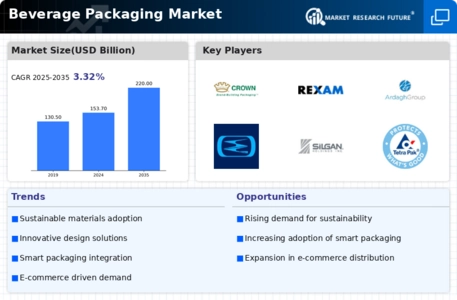
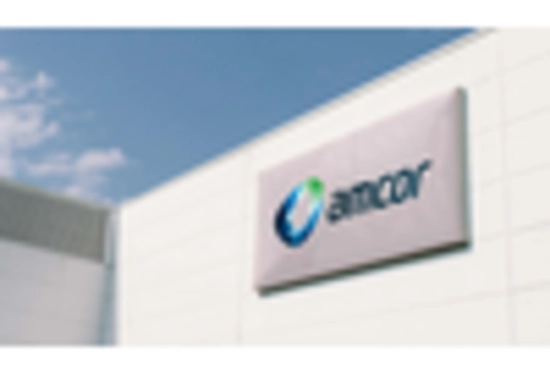
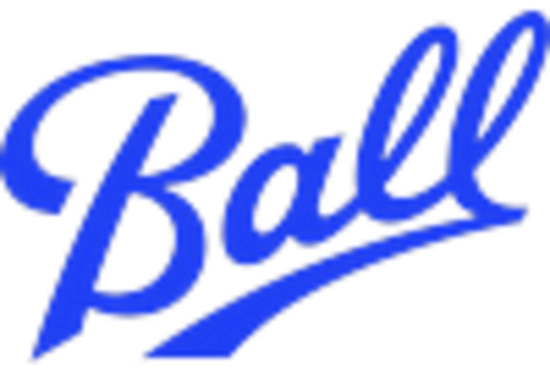
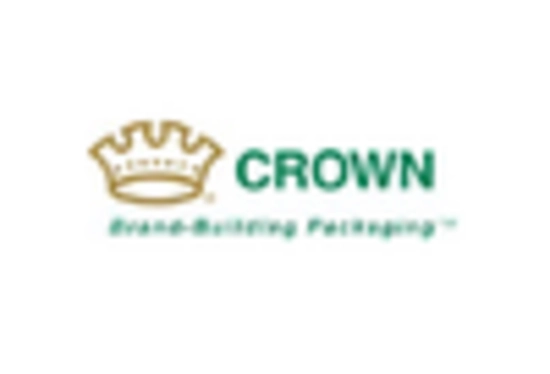
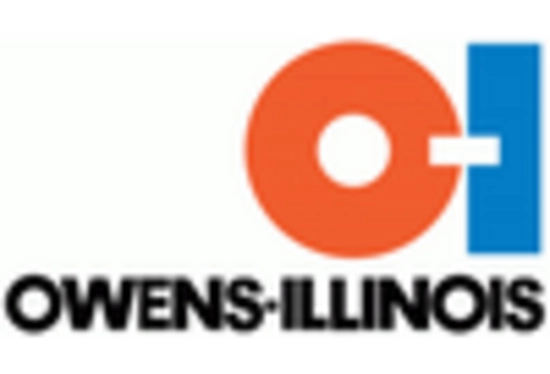
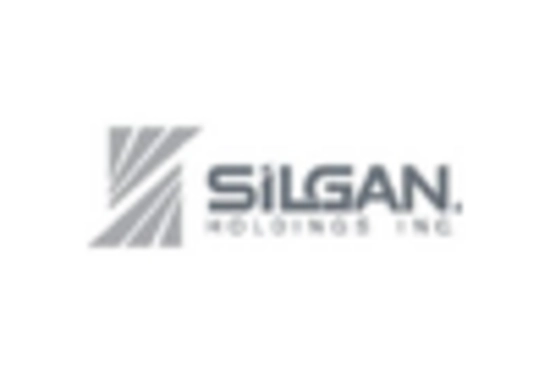
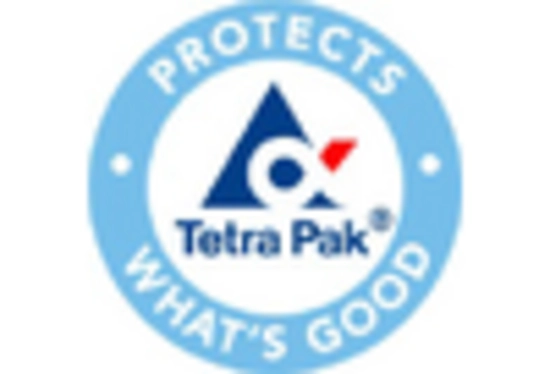

Leave a Comment